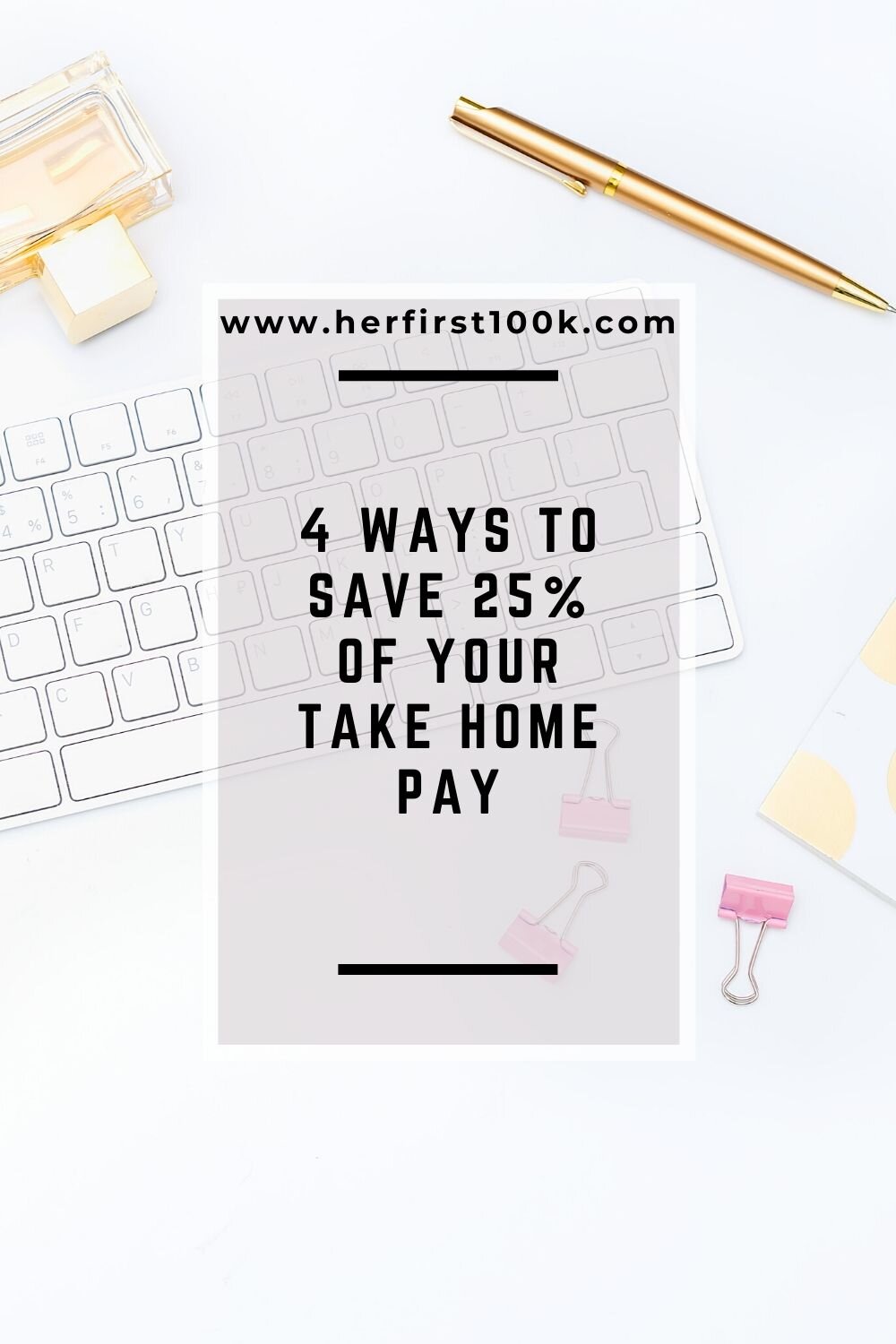The following article may contain affiliate links or sponsored content. This doesn’t cost you anything, and shopping or using our affiliate partners is a way to support our mission. I will never work with a brand or showcase a product that I don’t personally use or believe in.
Saving 25% of My Take Home Pay
This content was originally posted on Business Insider.
After building my business on the side for almost three years, I recently left my 9-5 day job to take my company to the next level.
During the three years, I was side-hustling, I saved 25% of my take-home pay from my corporate job, ultimately increasing my life’s savings to $100,000. To reach that $100,000, I had to prioritize how I would save the money. But with good planning and my favorite money tools, I was able to figure out how to make it work and reach my savings goal.
While I don’t plan on using my $100,000 to fund my business, it helps to know that it’s there as a if-ish-hits-the-fan fund.
Here’s exactly how I did it:
1. Priority-based spending
I always say that you don’t have to stop spending money – you just need to stop spending money on things you don’t value. Think Marie Kondo style: Does this bring me happiness? Is this useful? Find the three categories in your life where you get the most joy out of your discretionary income (travel, eating out, and nesting are my three.) Then decide to spend heavily there, and spend little to nothing on other things.
Besides normal living expenses such as rent, bills, food, and debt, extra spending is usually done mindlessly. That’s why so many people don’t understand where their paycheck goes. I track my daily spending and set a budget.
2. Living in a lower-cost neighborhood in Seattle
Seattle is one of the most expensive cities in the US. The average one-bedroom apartment in the city costs roughly $2,100 a month. I live in a quieter neighborhood slightly outside the city, where my monthly rent is closer to $1,500 a month. That’s $600 in savings a month! Did it make my commute longer? Yes. However, I loved using my commute time to catch up on podcasts or chat with friends and family; and for my lifestyle, it was worth it.
3. Automating savings
One thing I recommend to my clients is setting up a high-yield savings account. Some HYSAs have APYs that are nearly 5 times higher than your average brick and mortar Chase or Wells Fargo, which gives you about 0.1%.
Once I had my high-yield savings set up, I made sure to schedule automatic payments moving money from my checking to my high-yield savings. This made it super easy and I never had to think about moving money manually. Once the money was in savings, it meant the money wasn’t going anywhere.
Lastly, if you have direct deposit, your employer might allow you to allocate part of your paycheck to go directly into a savings account so you don’t need to remember to automate it yourself. This is how I was able to save so much money — it was on autopilot!
4. Increasing savings by 1% at a time
One percent might not sound like much. That’s exactly the point. I evaluate my budget often — and whenever I got a raise, I made sure to reset my budget and increase my savings. And whenever I was feeling a little crazy, I would readjust my savings rate and bump it up a percent (I never felt it!). Small increases add up over time, especially if you’re putting them into a high-yield savings account or investing the earnings. Your money is working harder for you that way.
The biggest trick to start saving money is to have a goal in mind. Whether that’s paying off credit card debt, funding your emergency savings, or growing your investments, have a goal you’re working towards so you can keep yourself accountable.
P.S. if you’re a new investor or just looking for a community to join as you begin your investing journey, we’re building a one-of-a-kind, non-judgemental community where you can learn exactly how to invest, build wealth, and receive exclusive access to Her First $100k. Learn more at www.herfirst100k.com/treasury.
RESOURCES
I get asked all the time: what are your favorite money management tools?
Treasury: We’re building a one-of-a-kind, non-judgemental community where you can learn exactly how to invest, build wealth, and receive exclusive access to Her First $100K.
Chase Freedom Unlimited: My go-to travel and dining rewards card that I recommend.
Deserve: The card I recommend for building credit. Great for students.
Capitalize: Did you recently switch jobs or launch your own business? Instead of losing money, roll over your old 401(k) into a brand new or existing IRA with Capitalize. They handle all the paperwork for you and for FREE, including calling the 401(k) provider on your behalf, completing paperwork, and sending faxes.
Personal Capital: The tool I check daily, Personal Capital is the best tool for tracking your net worth and your progress towards goals like saving, debt payoff, and (yes!) $100K.
The $100K Club Facebook Group: Need some honest money conversations in your life? Join my free community to get your burning questions answered.
Opinions, reviews, analyses & recommendations are the author’s alone and have not been reviewed, endorsed, or approved by any of these entities.



